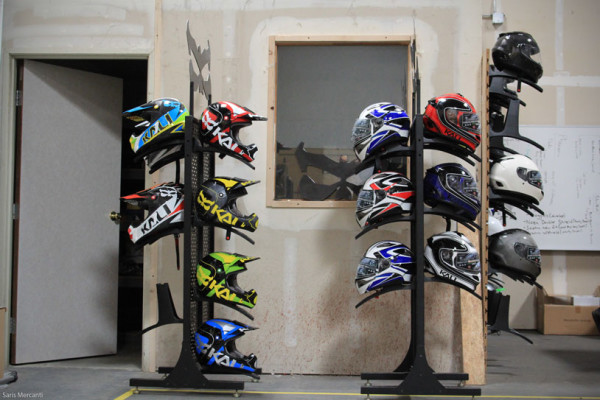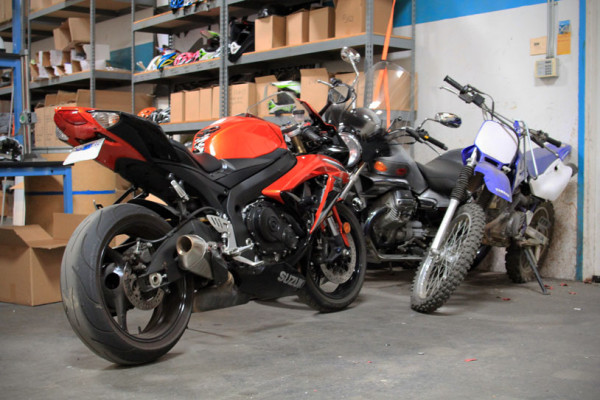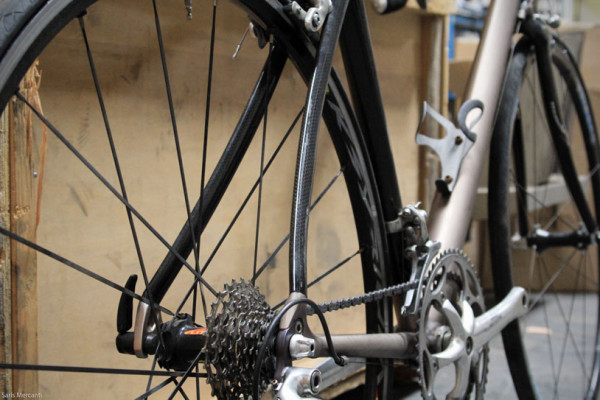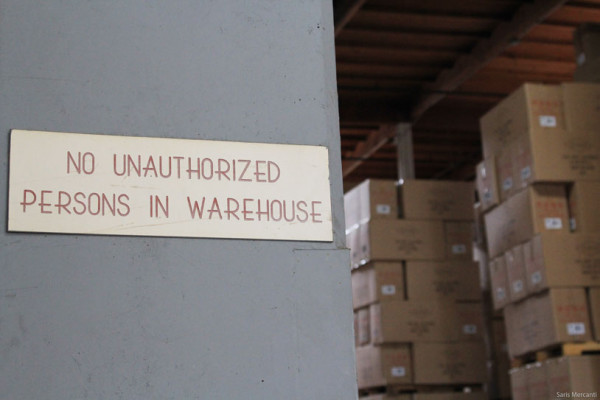 Located just a short drive outside of the Silicon Valley, Kali’s global HQ is housed in a nondescript warehouse in Morgan Hill, only a few blocks away from the Big S. Here in the shadow of thousands of boxed helmets is where products are conceived, designed, sold, and shipped.
Located just a short drive outside of the Silicon Valley, Kali’s global HQ is housed in a nondescript warehouse in Morgan Hill, only a few blocks away from the Big S. Here in the shadow of thousands of boxed helmets is where products are conceived, designed, sold, and shipped.
In stark contrast to many facilities we have visited in the past, the Kali offices are a very simple affair, because their focus isn’t on impressing distributors, it’s on creating new safety products that are on the leading edge of innovation.
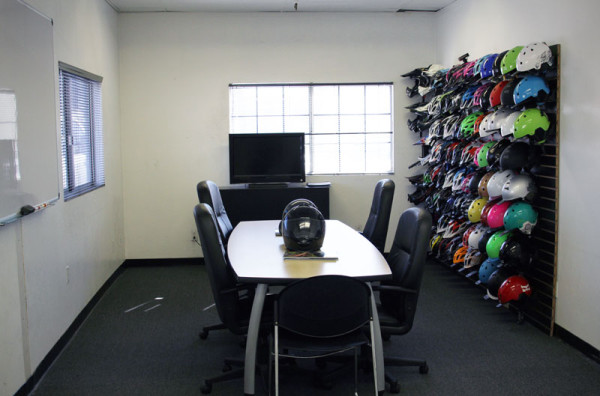 Entering the front door, the modest sales and graphics offices are on the right, and the major conference room is on the left.
Entering the front door, the modest sales and graphics offices are on the right, and the major conference room is on the left.
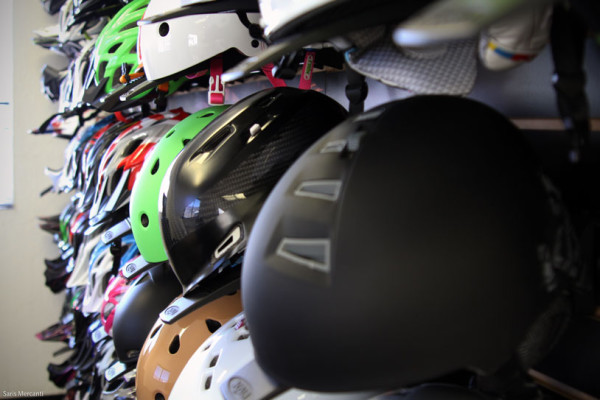 This rooms sole ornamentation comes in the form of Kali’s entire cycling and dirt bike helmet line up.
This rooms sole ornamentation comes in the form of Kali’s entire cycling and dirt bike helmet line up.
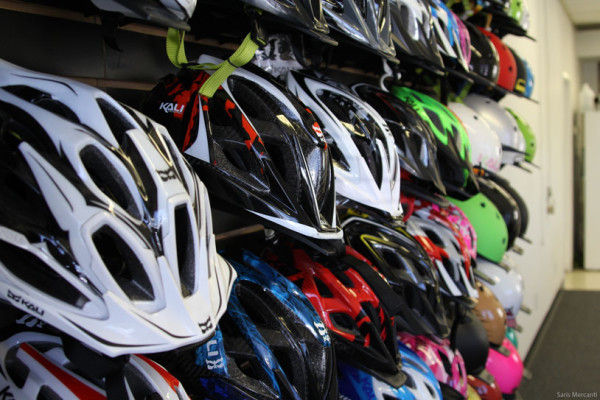 While not every color is represented, the various models brighten up the room, and make presentations easy. When conference calls or sales meetings are in progress, nearly every helmet model is within arms reach.
While not every color is represented, the various models brighten up the room, and make presentations easy. When conference calls or sales meetings are in progress, nearly every helmet model is within arms reach.
 Leaving the office area and entering the warehouse proper, you’re greeted with row after row after row of boxes. This panorama doesn’t do it justice.
Leaving the office area and entering the warehouse proper, you’re greeted with row after row after row of boxes. This panorama doesn’t do it justice.
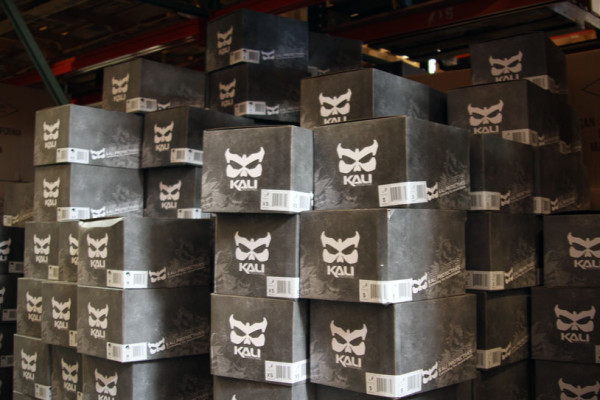 Stacked from ground to ceiling, it’s a proverbial Costco (ahem, Sam’s Club for those on the East Coast) of protective gear. Everything from BMX to road, to every gas powered thing in between, is represented here.
Stacked from ground to ceiling, it’s a proverbial Costco (ahem, Sam’s Club for those on the East Coast) of protective gear. Everything from BMX to road, to every gas powered thing in between, is represented here.
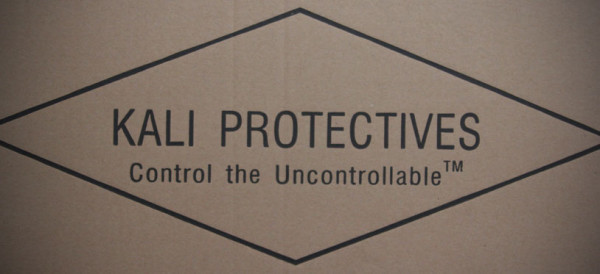 The sole purpose of all these products is to help “Control the Uncontrollable.” This is the company’s founding moto, and you can find it emblazoned on every box in the warehouse.
The sole purpose of all these products is to help “Control the Uncontrollable.” This is the company’s founding moto, and you can find it emblazoned on every box in the warehouse.
For those unfamiliar with Hindu lore, the name Kali is derived from a goddess, who is associated in various degrees with time, chaos, and change.
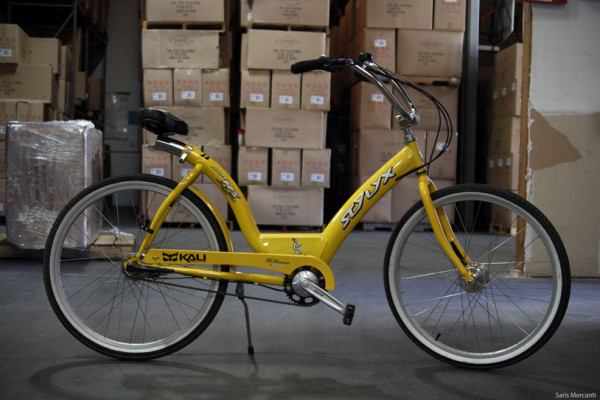 That seatpost
That seatpost
Of course, it’s not all just helmets and kneepads in the warehouse, as the building is sprinkled throughout with a variety of employees personal bikes, and this – the Stylyx. Tucked away shamefully in a corner, we’re not exactly sure what this abomination is, although it does look deceptively like a bicycle.
Nestled far in the back of the warehouse is the mad laboratory. Within the confines of this office and large space, Co-Founder and President Brad Waldron is constantly at work.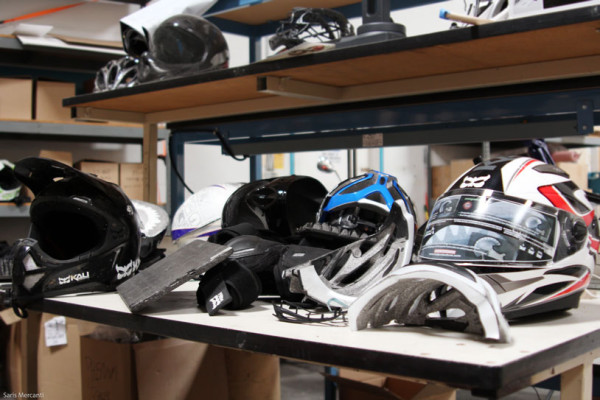
Every shelf, table, and box is filled with helmets in various stages. From prototypes to unreleased color samples, to new models and crashed product, there’s a good chance you’ll find a few dozen of everything here – either sawed in half, smashed to pieces, or in some stage of the manufacturing process.
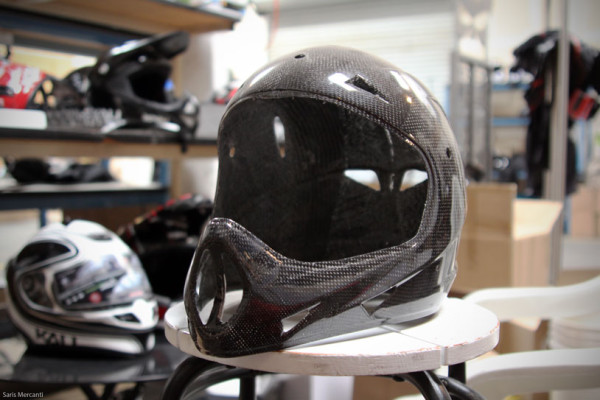 What sets Kali apart in an incredibly competitive helmet market is the impressive technology behind their products. The average helmet utilizes glue to bond the EPS foam and helmet shell. This leaves a gap between the two materials, and during a crash, results in two successive impacts. Ground to shell, shell to foam.
What sets Kali apart in an incredibly competitive helmet market is the impressive technology behind their products. The average helmet utilizes glue to bond the EPS foam and helmet shell. This leaves a gap between the two materials, and during a crash, results in two successive impacts. Ground to shell, shell to foam.
To mitigate the double impact, the company has pioneered a technology they call Composite Fusion. Stripping the tech of it’s marketing terminology, the process involves directly injecting EPS foam and fusing it with the exterior shell. This eliminates any gap between the shell and foam, and allows impacts to be diffused more efficiently in the event of a crash.
Visually, this is apparent in the shape of the helmets. Unlike traditional helmets, where the opening must be large enough for the entire EPS foam to be pushed in and attached, the shell of Kali helmets can be tapered at the opening on the bottom, which helps contribute to a better fit.
This tech has allowed Kali to utilize thinner shells, which has been proven during testing to offer significant gains in g force reduction. It’s also allowed them to experiment with different designs, and even produce the world’s lightest DOT helmet, which is similar in appearance and size to a standard mountain bike full face.
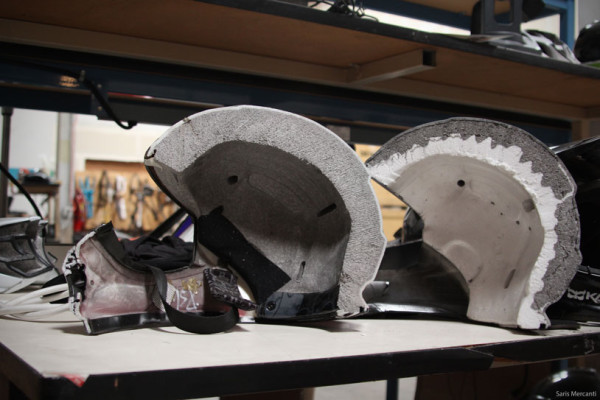 The technology isn’t impossible to replicate, but no other manufacturer on the market currently produces a helmet using similar techniques. According to Brad, while other factories could figure it out, it’s very hard to replicate and the initial rejection rate would be very high.
The technology isn’t impossible to replicate, but no other manufacturer on the market currently produces a helmet using similar techniques. According to Brad, while other factories could figure it out, it’s very hard to replicate and the initial rejection rate would be very high.
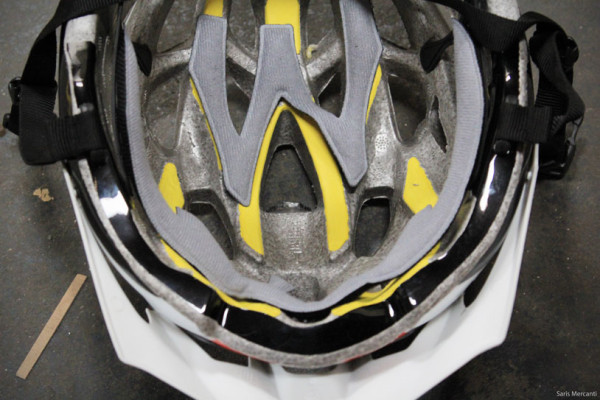 Bryan Mason, Head of Sales and Marketing, wagers that the rejection rate was so high initially, that no other company would have found it cost effective to produce those products. So why do it? Brad started his career doing R&D work for the military on projects that had unlimited budgets and timelines (as most American tax payers may be familiar with). In that world, there is a huge “just try it approach.”
Bryan Mason, Head of Sales and Marketing, wagers that the rejection rate was so high initially, that no other company would have found it cost effective to produce those products. So why do it? Brad started his career doing R&D work for the military on projects that had unlimited budgets and timelines (as most American tax payers may be familiar with). In that world, there is a huge “just try it approach.”
Kali has a similar R&D heavy ethos. They believe that to produce the safest helmets on the market, you have to take risks that may not seem economically profitable. You have to do things because it’s innovative, and without that first step, there can’t be a second.
For example, their new Maraka XC and Road helmets use a novel bumper fit system, which makes use of a memory foam like substance. They first experimented with that technology to see if they could reduce low G impacts, because concussions can occur between 80-90 Gs, and EPS foam doesn’t start to crush until 100. In testing, they found the tech didn’t offer significant gains in low impact scenarios, but it worked really well as a fit system to reduce hot spots.
On a lighter note, Brad is also a big motorcycle enthusiast and his lair is filled with several brap bikes.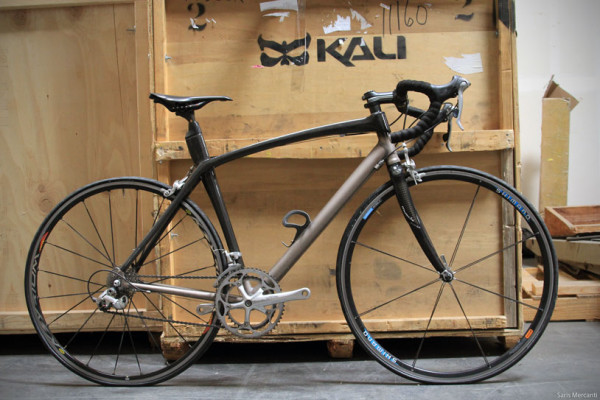 Prior to founding Kali, Brad was employed as an engineer at a little bike company called Specialized. One of his projects there was this bike, and even though the tires are flat, the wheels are mismatched, and the component spec is nothing to write about, it’s special because…
Prior to founding Kali, Brad was employed as an engineer at a little bike company called Specialized. One of his projects there was this bike, and even though the tires are flat, the wheels are mismatched, and the component spec is nothing to write about, it’s special because…
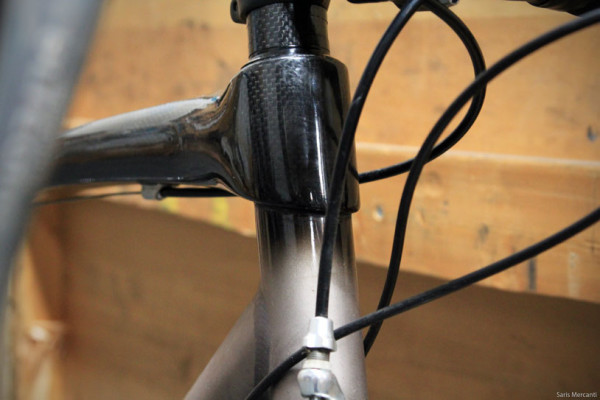 it is Tarmac #2. The first Tarmac prototype did not survive testing, but this bad boy lives on.
it is Tarmac #2. The first Tarmac prototype did not survive testing, but this bad boy lives on.
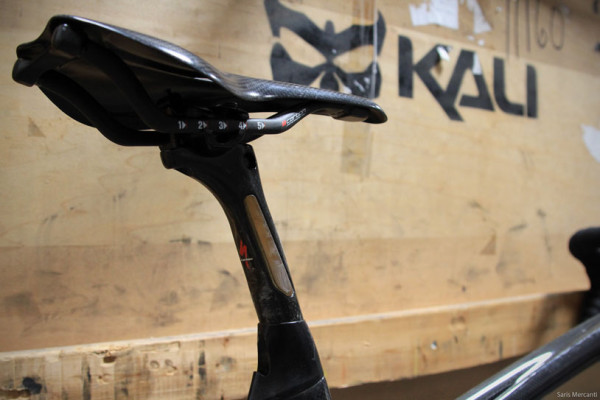 In addition to a laundry list of impressive engineering accomplishments, Brad also helped develop the Zert system, and his name can be found on the patent.
In addition to a laundry list of impressive engineering accomplishments, Brad also helped develop the Zert system, and his name can be found on the patent.
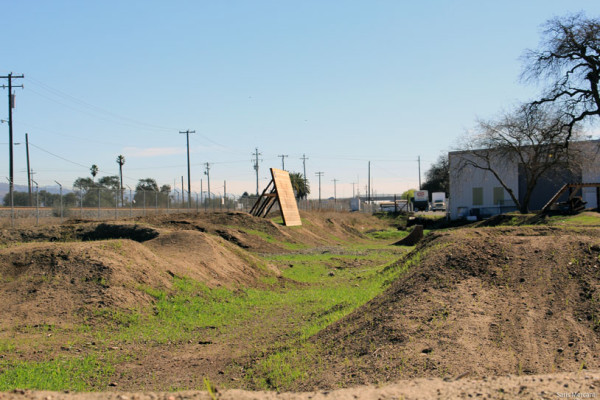 Just outside the factory lies a giant playground. The area just outside and for some ways behind this photograph is occupied by a large pumptrack, while the area pictured is dominated by a series of jumps and hips.
Just outside the factory lies a giant playground. The area just outside and for some ways behind this photograph is occupied by a large pumptrack, while the area pictured is dominated by a series of jumps and hips.
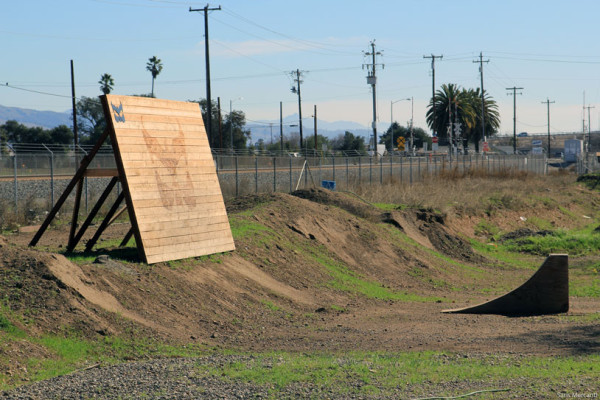 Out of frame to the right is yet more dirt jumps and wood work, which allow you to drop in and connect to this massive wall ride, and several other hips and step up/step down combos.
Out of frame to the right is yet more dirt jumps and wood work, which allow you to drop in and connect to this massive wall ride, and several other hips and step up/step down combos.
Or you can just watch the video to get a better idea of the whole layout.
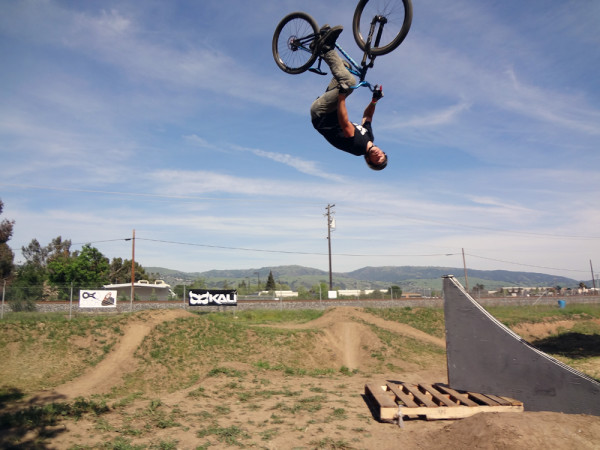 Special thanks to Brad Waldron, Bryan Mason, and everyone else at Kali for showing us around!
Special thanks to Brad Waldron, Bryan Mason, and everyone else at Kali for showing us around!
